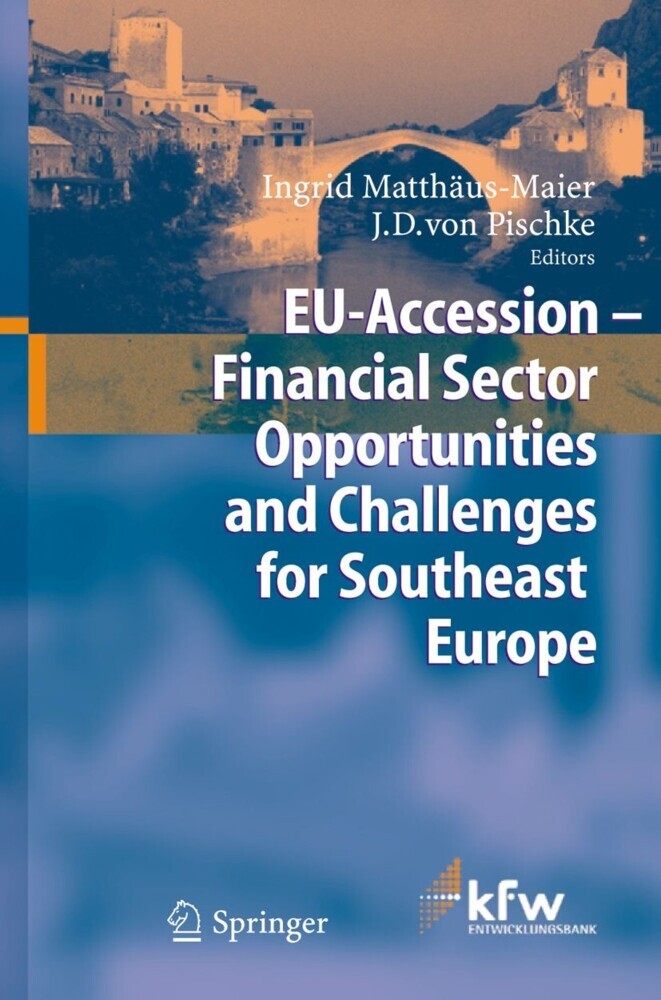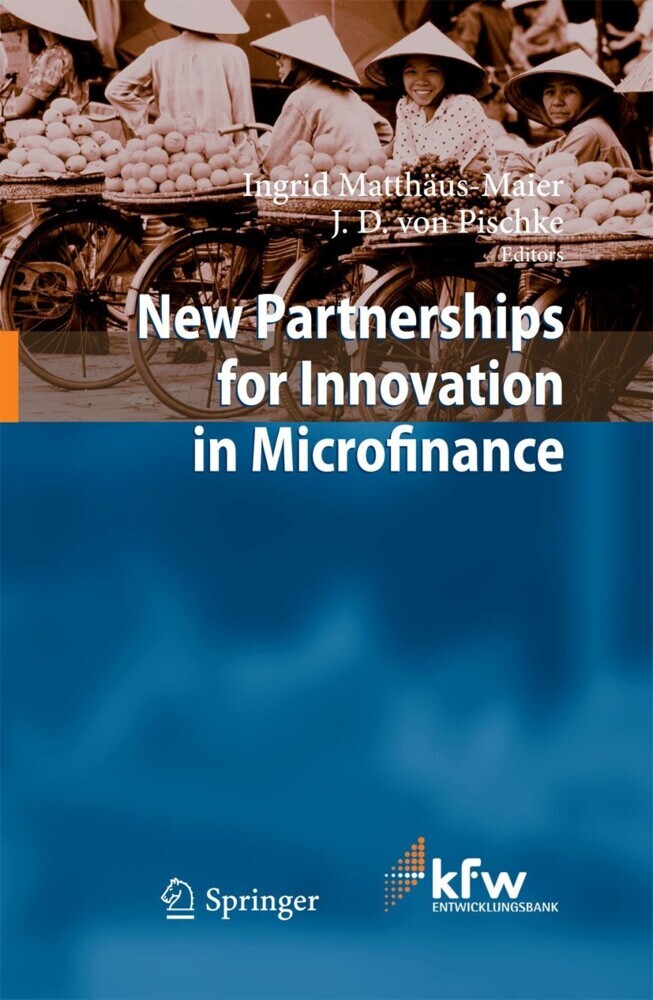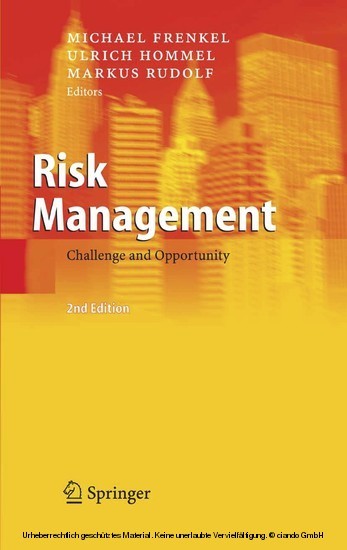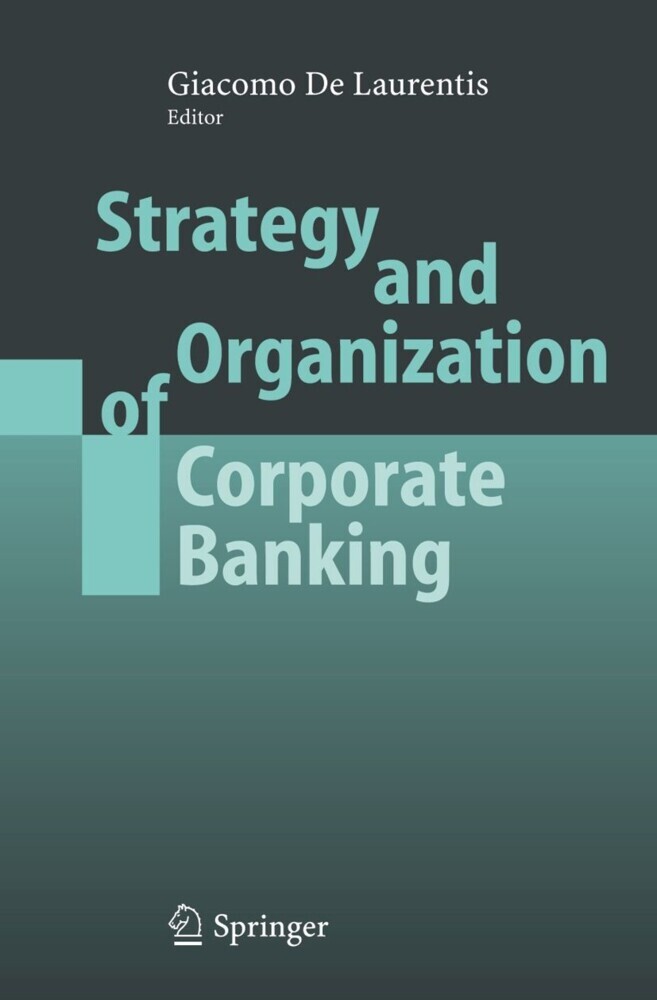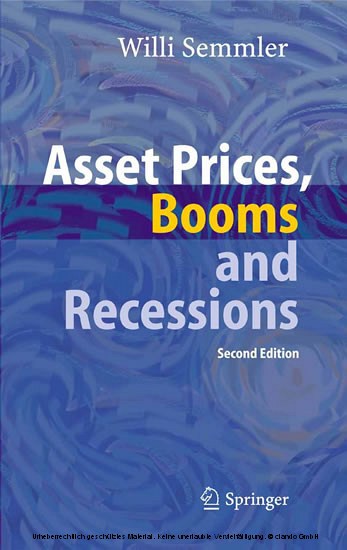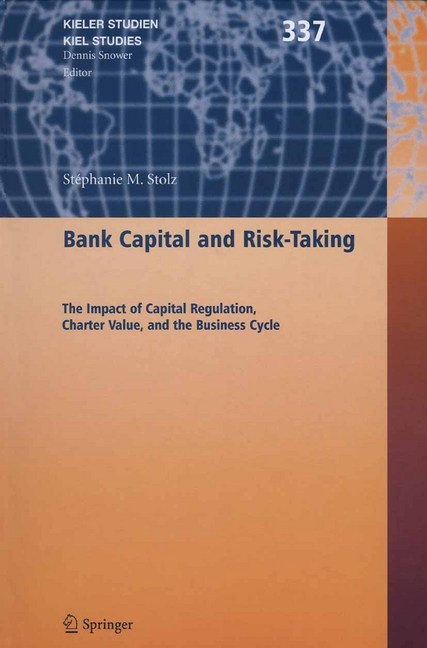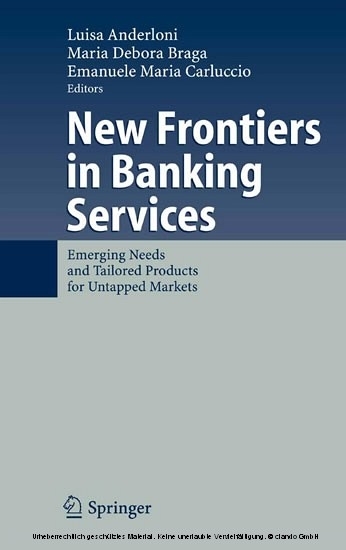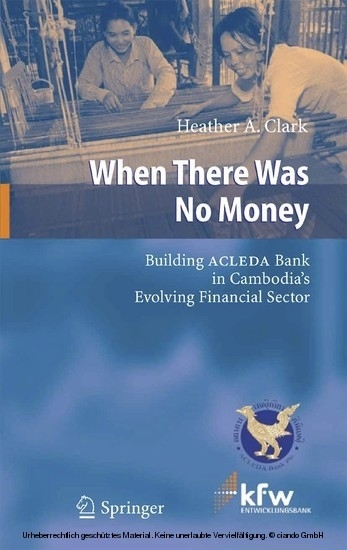EU Accession - Financial Sector Opportunities and Challenges for Southeast Europe
Financial Sector Opportunities and Challenges for Southeast Europe
EU Accession - Financial Sector Opportunities and Challenges for Southeast Europe
Financial Sector Opportunities and Challenges for Southeast Europe
A distinguished international group of central bankers, commercial bankers, entrepreneurs, academic advisors, policymakers, and representatives of development finance organizations and donor agencies, brought together by KfW, examines in this book the future of financial sector development in Southeast Europe. They explore ways to strengthen the banking sector in Southeast Europe, further promote SMEs, and improve access to financial services in the region. Experts and decision-makers assess the opportunities and challenges presented by the EU accession process and Basel II, and offer candid insight into the expanding role of the private sector in developing the financial landscape. The perspectives presented in this book will prompt discussion and intellectual exchange that will serve as a new starting point for further successful cooperative initiatives.
KfW has been involved in the financial sector development of the current accession countries for almost fifteen years. Since the mid-1990, KfW has been promoting the financial sector and private enterprise of Southeast Europe through its support of, and cooperation with, microfinance and commercial banks and microfinance NGOs.
KfW has been involved in the financial sector development of the current accession countries for almost fifteen years. Since the mid-1990, KfW has been promoting the financial sector and private enterprise of Southeast Europe through its support of, and cooperation with, microfinance and commercial banks and microfinance NGOs.
1;Table of Contents;13 2;List of Abbreviations;18 3;PART I: Stimulating the Economy of Southeast Europe;20 3.1;Introduction to Part I;21 3.2;Setting the Stage for Stability and Progress in Southeast Europe;24 3.3;The Scenario for EU Accession by Southeast European Countries;55 3.4;Infrastructure Finance, Accession, and Related Policy Issues in Southeast Europe;59 3.5;Making It Easier to Do Business in Southeast Europe;63 4;PART II: Financial Regulation for Stability and Protection in Southeast Europe;71 4.1;Introduction to Part II;72 4.2;Financial Sector Development in Southeast Europe - The Roles of EU Accession and Basel II;76 4.3;Implementing European Standards of Banking Regulation in Georgia;107 4.4;Issues Concerning Foreign Banks' Operations in Bosnia and Herzegovina;112 4.5;The Role of Foreign Banks in SEE;116 4.6;The Impact of Basel II on Banking in Albania and Southeast Europe;120 4.7;Financial Stability in Southeast Europe - Basel II and the Challenges Ahead;125 5;PART III: Bankers' Perspectives - Dynamic Banking in the Changing Market of Southeast Europe;136 5.1;Introduction to Part III;137 5.2;Bankers' Perspectives - Dynamic Banking in a Changing Market;140 5.3;Evolution of the Banking Sector in Southeast Europe - The Role and Business Strategies of Domestic Banks;172 5.4;Financing Small and Medium-Sized Companies;177 5.5;The Business Strategies of Domestic Banks in the Long Run - SME Lending as an Attractive Market Segment;180 5.6;Building a Market Niche Also Builds a Market - Opportunity Bank in Montenegro;185 6;PART IV: Clients' Perspectives on Access to Financial Services for Micro and Small Enterprise in Southeast Europe;189 6.1;Introduction to Part IV;190 6.2;Clients' Perspectives - Providing More Effective Financial Services for Micro and Small Enterprises;194 6.3;Access to Finance: Issues and Opportunities in Southeast Europe;217 6.4;Nonfinancial Obstacles to SME Financing in Serbia;222 6.5;Constraints to Business Development in Bulgaria and the Case for Action;230 6.6;Degrees of Competition in Serving Target Groups - They May Be Closer than You Think;235 6.7;A New Approach to Business Development Services in Southeast Europe;240 7;PART V: Looking Ahead - Public-Private Partnerships in the Financial Sector in Southeast Europe;244 7.1;Introduction to Part V;245 7.2;Public-Private Partnerships for Financial Development in Southeast Europe;251 7.3;Replicable and Transparent PPP Models for Financial Sector Development;276 7.4;Using PPPs to Facilitate Transactions in Financial Markets;281 7.5;Sustainable Microfinance Banks - IMI as a Public-Private Partnership in Practice;287 7.6;Opportunities for Public-Private Partnerships in Financial Sector Development;295 7.7;Public-Private Partnership - Results in the Banking Sector in Southeast Europe;301 7.8;Microfinance Investment Funds - An Innovative Form of PPP to Foster the Commercialisation of Microfinance;320 8;PART VI: Summary and Conclusions;333 8.1;An Overview of Banking, Financial Regulation, and Access to Financial Services in Southeast Europe in the Context of EU Enlargement;334 9;Indices;347 9.1;Index of Names;347 9.2;Index of Countries;349 9.3;Index of Banks and Organisations;352 9.4;Index of Terms;356
Matthäus-Maier, Ingrid
Pischke, J. D.
| ISBN | 9783540269632 |
|---|---|
| Artikelnummer | 9783540269632 |
| Medientyp | E-Book - PDF |
| Auflage | 2. Aufl. |
| Copyrightjahr | 2005 |
| Verlag | Springer-Verlag |
| Umfang | 369 Seiten |
| Sprache | Englisch |
| Kopierschutz | Digitales Wasserzeichen |

